Overview of What's New in CSM 10.2.0
Links to community-suggested features on the Cherwell Ideation Station are provided when available. You must create an account and be logged in to view ideas. Additionally, links to "Learn more ..." about the feature are provided at the bottom of most sections.
Train a Machine Learning Model
You can train a machine learning model that analyzes the content of a field and makes a prediction about a different field. Once the model is trained, it provides a prediction and a confidence score of the prediction.
The machine learning model is created using a search query that is scheduled to retrain the model at a regular interval. With quality data, this process improves the accuracy of the predictions over time.
Solution Search Improvements
Related Item Navigation has been enhanced to allow users to associate an external Knowledge Source with a record in the CSM Browser Client. This allows users to access information they used to solve an issue on a record. Each URL is imported into the new Solution Search External tab and is listed as a results list.
Improvements have also been made to the Internal tab. A Journal record stating that a record was used as a solution is also created. Once a Knowledge Source is used as a solution, users can run the configured One-Step™ Action for the solution. The One-Step Action to run for the solution can be configured in CSM Administrator.
Users with rights to send email can select Share with Customer from the vertical ellipsis Action Menu on an internal or external Knowledge Source. This action opens an email to the customer with fields populated based on the Knowledge Source. If the Communication tab in the Related Item Navigator is configured, the email opens there. Otherwise, an Email window opens. This action can be enabled or disabled from CSM Administrator.

Learn more:
Configure Solution Search Properties
Improved Business Object Lifecycle
A new Business Object Lifecycle Editor allows you to save time by creating and managing your lifecycles in a single visual workflow tool. New form controls display and control progression through the lifecycle so that users can see their Work Items, such as Incidents and Change Requests, and their progress with a journaled update for each movement. Customizable transition rules and expressions ensure an object must be in a certain state before it can be progressed.
The Lifecycle Editor allows for an intuitive and overall view of the current lifecycle. Customers can see the progress of their ticket and users can see what requirements need to be met to allow their work to be progressed.
The existing pre-10.2.0 legacy lifecycle method can be used alongside the new Lifecycle Editor so there's no deadline to migrate records. A new One-Step Action (Transition a Business Object) has been provided to help you migrate your records, along with documentation. For more information, see Migrate a Business Object Lifecycle.
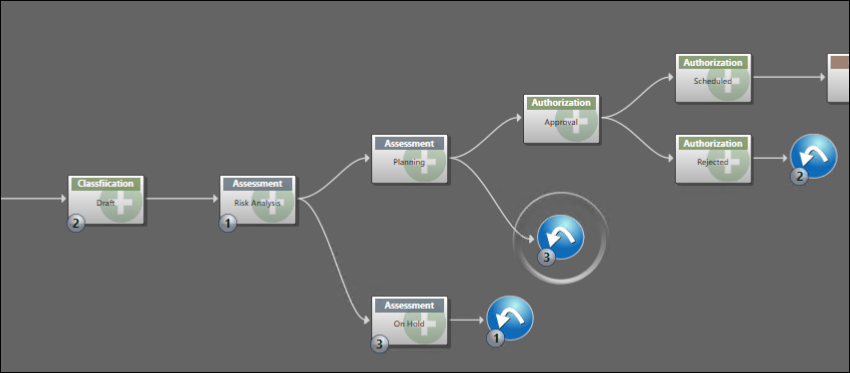
Improved Approvals Configuration
The enhanced Approvals feature reduces the need for complex, custom configuration within content, provides a more consistent and improved experience for administrators, technicians, and customers, and reduces configuration time for administrators.
Administrators now have more control over how Approvals are configured within the Approvals Engine with the ability to define denial thresholds, create approvals for customer workgroups, create approver workgroups, and configure approval emails so that they are attached to their parent record. Portal users can now respond to approvals without consuming a CSM license.
Approvals are exposed to the Cherwell REST API, enabling REST API users to integrate with tools such as Slack.
You can also configure customer approvals without having to use the unsupported Cherwell mApp Solution.

New Delegation Service
A new Delegation service is available in the CSM Desktop Client and CSM Browser Client (not available in the CSM Portal), allowing users to hand off work to one or more delegates when they are unavailable.
Delegates are not approval-specific and can be set for any Major and Supporting Business Objects where Track Owner has been selected. For example, you can delegate approvals, Incidents, and Change Requests.

Administrators can configure a user's ability to manage delegates and set up delegation emails for approvals. If granted additional rights, a manager or administrator can manage delegates on behalf of other users or view all delegations in a CSM system.

Blueprint Consolidation
Applying multiple Blueprints to a system can be difficult and time-consuming, because the Blueprints must be applied one at a time in the order they were created. This feature combines a contiguous range of Blueprints into a single, consolidated Blueprint. In the time it takes to apply one Blueprint, the consolidated Blueprint makes all of the changes that the range of Blueprints would make if they were applied separately.
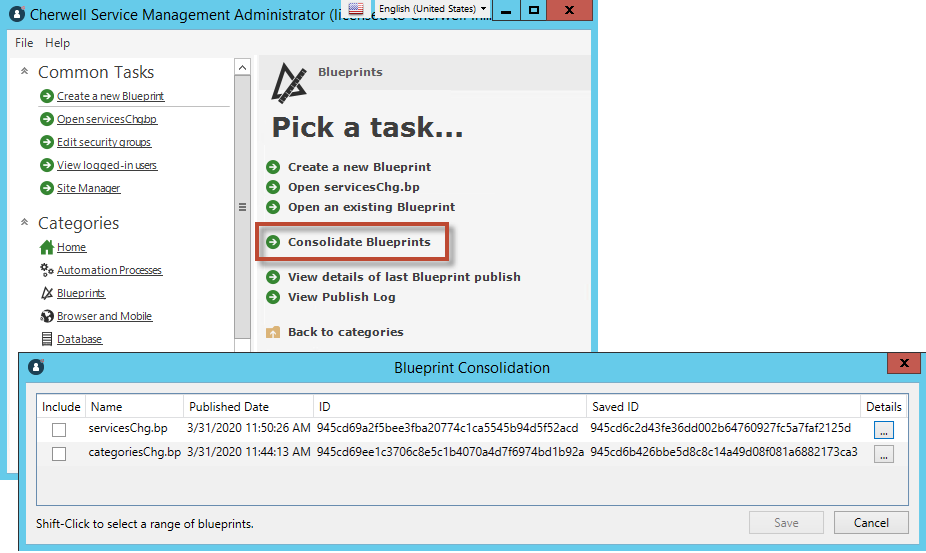
Health Check Improvements
Many improvements have been made to the Health Check Tool, which helps you monitor and optimize system configurations that impact performance. For example, several new rules have been added.
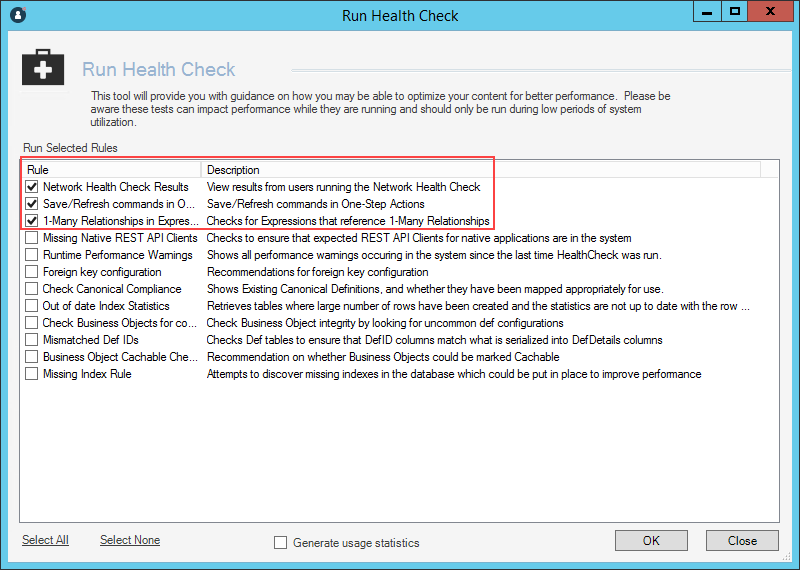
- Network Health Check
If you have the Allow diagnostics security right, you can run a Network Health Check rule from the CSM Desktop Client and CSM Browser Client. The test validates network speed and connectivity. Administrators can run the tool from CSM Administrator to view the results of all users running the test.
- Save/Refresh Actions in One-Step Actions Performance Health
Check Rule
The Save/Refresh Actions in One-Step Actions rule in the Health Check Tool returns a list of all Save or Refresh Actions in One-Step Actions across the system, as excessive use of them can cause performance issues.
- 1-Many Relationships in Expressions Rule
This new rule detects expressions that use one-to-many relationships, which may cause performance issues because only the first record in a relationship is evaluated by an expression, even if thousands of records are returned.
Use this information to find and assess the needs for expressions that use one-to-many relationships. For example, you may want to replace these expressions with those that use one-to-one relationships. Other configurations may also meet your needs, such as using a constant value rather than an expression.
- Create Blueprints from Health Check Results
After running the Health Check Tool, you now have the option to create a Blueprint to add recommended missing indexes and remove duplicate indexes based on the Health Check results. For more information, see Run the Health Check Tool.
You can also run the Health Check Tool using Command-Line Configuration (CLC) options. A new /healthcheckblueprint command-line option is available, allowing you to convert Health Check results into a Blueprint using CLC. For more information, see Health Check Command-Line Options.
- Run the Health Check Tool from the Command-line Configure
Utility
You can now run the Health Check Tool from the Command-line Configure Utility (CLC) to monitor and optimize system configurations that impact performance. There are two available modes:
- Full (default): Runs selected rules, shows a summary on the console, and produces an HTML report.
- Silent: Produces no report, but returns a success or failure message indicating if the system is in good health. You can then determine whether or not to run full mode.
Web Client Improvements
- Grid Display on Small Screens
When using CSM Browser Client to view grids on a device with a small screen, the rows of data are reformatted to fit the screen. The grid collapses into a vertical list.
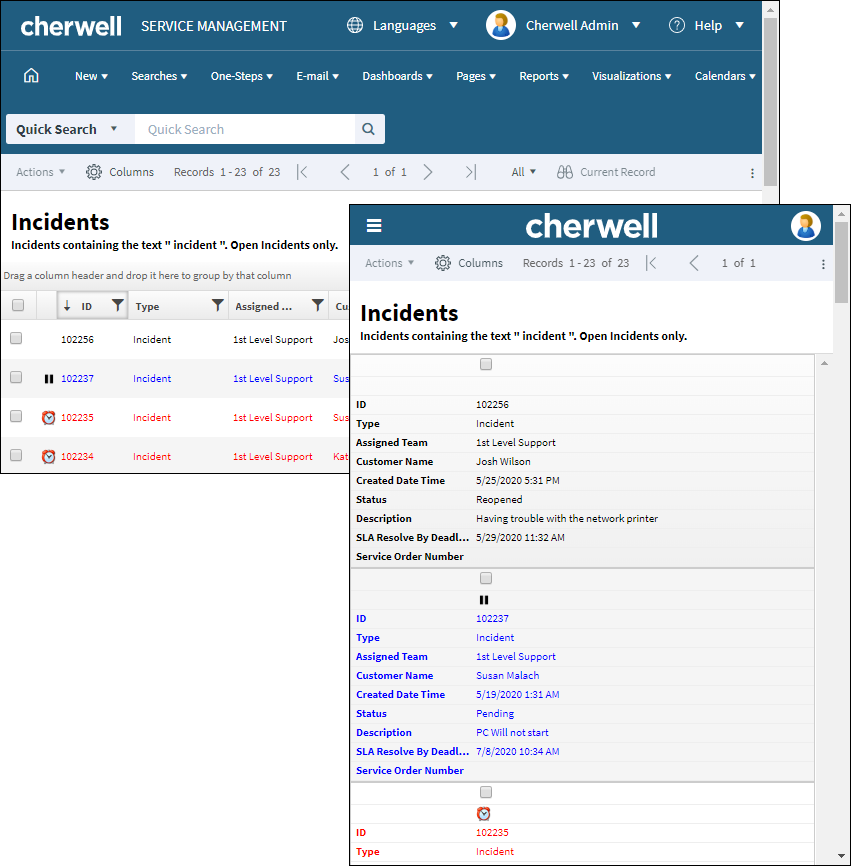
-
Accessibility Improvements
When using the CSM Browser Client or CSM Portal, users and customers will receive a warning two minutes before their session expires. The user/customer may choose whether or not to stay logged in. If they do not make a selection, the warning will stay visible until the session expires, at which time the user/customer will be logged out.

One-Step Action Improvements
- Copy to Clipboard
One-Step Action
When you run a One-Step Action, you can use the Copy to Clipboard Action to copy text data to the clipboard. This allows you to use the data outside of the One-Step Action.
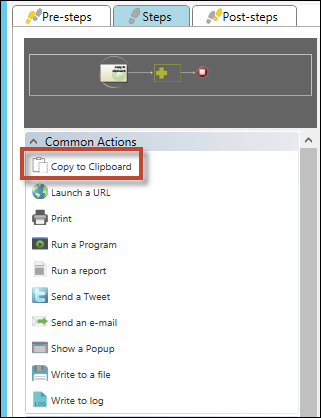
- Go To a Record Action in a
One-Step Action
When you use the Go To a Record Action, you can now search for a record, and you can continue execution of a One-Step Action if a Go To a Record Action fails. Save the error message as a variable to use later.
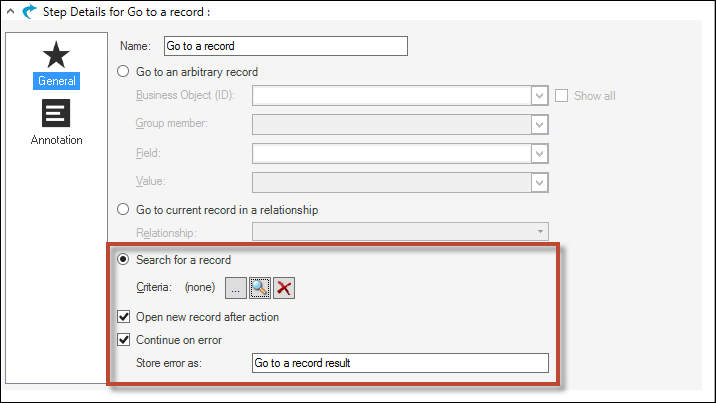
- One-Step Actions
in Widgets
When adding a One-Step Action to a button or link widget on a dashboard, users have the option to suppress the Progress dialog when the One-Step Action runs. If the Show Progress check box is cleared, the Progress dialog will not be shown when running the One-Step Action.

Automation Process Management Improvements
-
Statistics Refresh Button
When viewing the Automation Process Statistics window in CSM Administrator, users can select the Refresh button to refresh the statistics displayed.

- Status Grid Column Additions
The following columns have been added to the Automation Processes grid to make it easier to manage a large number of Automation Processes:
- Priority
- Trigger
- Description
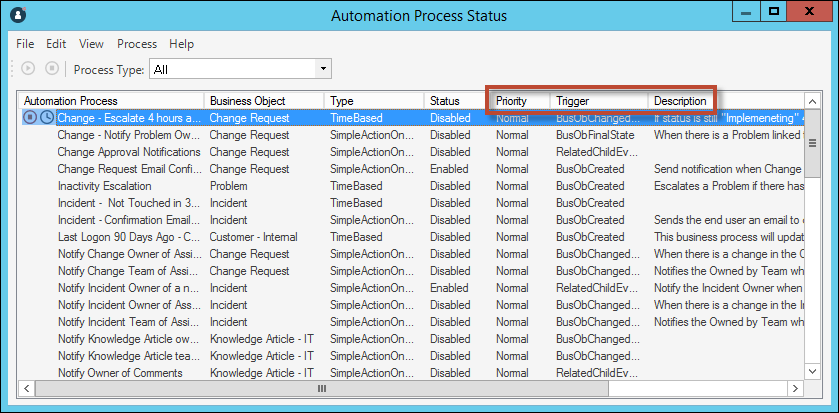
Trusted Agents Logging
The Trusted Agent Service now logs messages through the Cherwell Application Server on the main CSM server, in addition to logging on its own server.
Detailed logging is still available on the Trusted Agent server when enabled. Warning and Above logging for the Trusted Agent Service is now also available on the main CSM server if logging is enabled for the main Cherwell Application Server at the Warning and Above level or higher.
Trusted Agent log messages in the Cherwell Application Server logs contain the log level, message, time stamp, a thread name of "Trusted Agent Server", domain, and host information for the Trusted Agent server sending the log.
When logging is enabled on the Trusted Agent server, it can take up to 60 seconds for messages to be seen and delivered to the Cherwell Application Server.
Miscellaneous Enhancements
- Third-party Reporting Updates
You can connect the Power BI third-party reporting tool to the Cherwell REST API and retrieve data from CSM using the Power BI Data Connector from Cherwell.
The Cherwell Power BI Data Connector is updated to make use of Power BI Navigation Tables. Navigation Tables interact with CSM Grids and Saved Searches to return and display data in a user-friendly way.
You can also now optionally set a locale to translate returned data.
If preferred, you can still enter a Saved Search URL to return data and modify its display as you could before the above enhancements were made.
Note: The August 2020 version (2.84.701.0) of Microsoft Power BI Desktop includes the Microsoft certified Cherwell Power BI Data Connector. We recommend you use this version of the connector. Regardless of whether you are using this or another connector version, we recommend you review the relevant documentation, specifically concerning:- Connecting Power BI and the Data Connector.
- Using grids with Power BI.
- Authentication in Power BI.
- Protect Content in
mApp®
Solutions
You can now choose to protect your mApp Solutions to prevent customization of the core components. This feature allows users to create additional content to work alongside your protected mApp Solution.
A shield icon (
 ) is
shown alongside protected content items. The shield icon may be displayed in
Blueprints, Business Object Editors, Item Managers, Relationship Grids, Form
Editors, the Form Arrangement Editor, or the Grid Editor. Protected content
makes some menu options unavailable.
) is
shown alongside protected content items. The shield icon may be displayed in
Blueprints, Business Object Editors, Item Managers, Relationship Grids, Form
Editors, the Form Arrangement Editor, or the Grid Editor. Protected content
makes some menu options unavailable.

- Multiselect in Grids
In grid forms in CSM Desktop Client and CSM Browser Client, users can now select multiple records at once. When multiple records are selected, users can run a One-Step Action against all selected records. Users can also export all selected records.
Users can see a count of records selected, select all records, or clear all selected records from the toolbar. When multiple records are selected, paging will clear the selection.
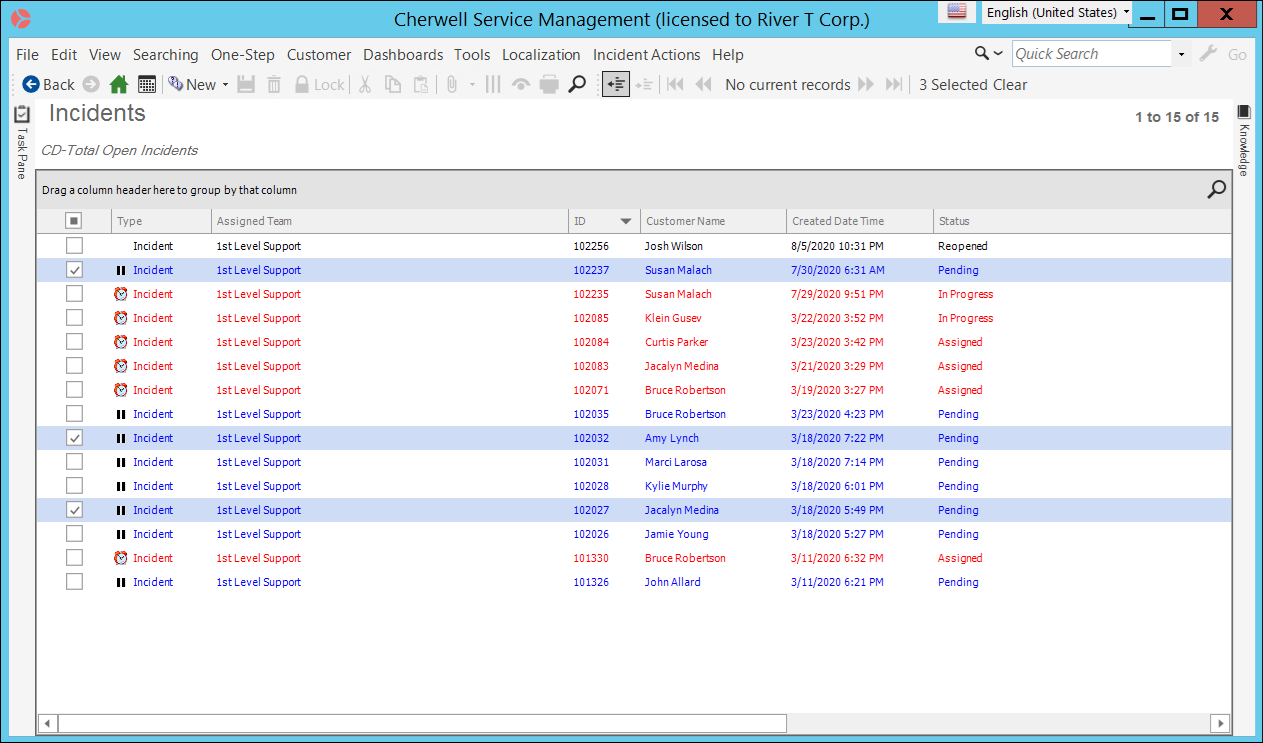
- Exclude Emails from a .czar File
Select the Exclude emails option to exclude email messages from data exports. This can help reduce the size and time when exporting data.
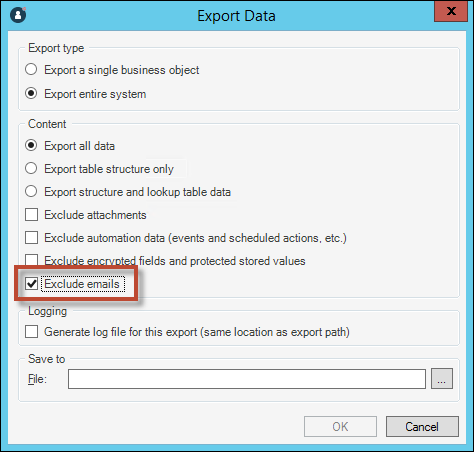
- JSON Path (array) Modifier
Use the new JSON Path (array) modifier to find a range of values based on a provided path.
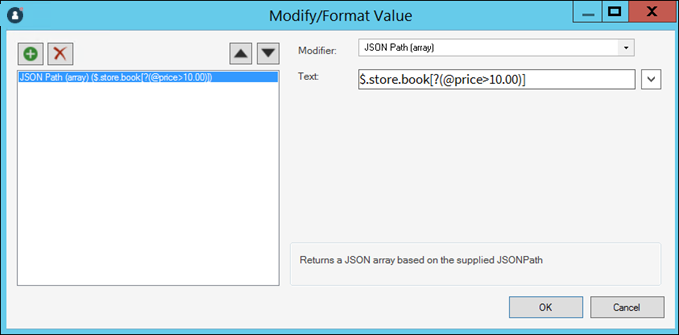
- Is Not Member of Team Operator
Use the Is not member of team operator to create an expression or search to determine if a user's ID is not a member of a team. Using this feature, you can make decisions based on lack of team membership.
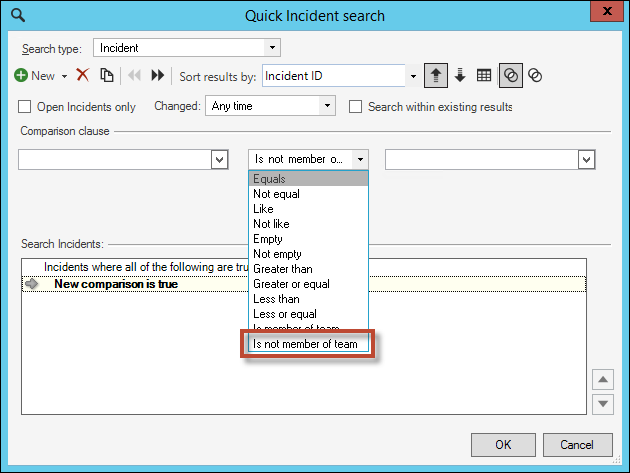
- Duration Column in the Scheduler
The Scheduled Items table in CSM Administrator now has a Duration column to show the actual duration of each job. Use this to troubleshoot scheduling problems or to determine reasonable timeouts for scheduled jobs.

- Cherwell Server
Manager
Comments
Administrators can now add comments or helpful information to the Server Manager. Examples include informing other administrators why services may be stopped or of upcoming maintenance.
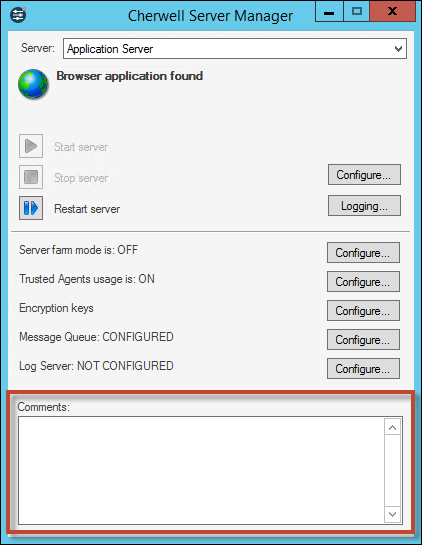
Documentation Updates
As part of an ongoing effort to improve technical documentation related to system configuration, performance, monitoring, security, information for the following subjects is now available:
- Combined List of System Reliability Topics
View a full list of documentation updates to help ensure your system is configured for optimal performance, stability, and security.
- Content Standards
Learn about the standards Cherwell uses for developing CSM content elements, such as Business Objects, forms, fields, and more. Applying these standards to content you create and modify will help minimize issues associated with inconsistent content items.
- Operations List in Swagger UI
The Cherwell REST API Operations List section uses Swagger UI to display reference information about the Cherwell REST API endpoints and methods.
See Operations List.
- Troubleshooting Queues in CherwellMQS
Learn how to interpret CherwellMQS through the RabbitMQ management interface.
- Best Practices for Relationships
Use these guidelines to ensure relationships meet the needs of your users without impacting performance.
- Use Modifiers to Encrypt Sensitive Data
Learn how to use modifiers to store private information, such as API keys, user names, or passwords in CSM. This is useful for integrating CSM with other systems (Examples: Amazon, Microsoft Teams) that require credentials and other sensitive information to be stored in the CSM database.
- Automation Process Workflow
Learn how Automation Processes are processed and run by the Automation Process Service, which is a microservice of the Cherwell Service Host. Once Automation Process events are logged, they are collected in blocks of 100, and then sent to the Cherwell Message Queue Service (CherwellMQS). Additional workers are added if needed, the events are scheduled, and then they are run.
- Configure the
Cherwell Service Host
for a Local Scheduler
You configure the Cherwell Service Host to run the Scheduling Service on a separate network that the main CSM installation. Configuration steps include creating a new Schedule Group and then associating that group with the Cherwell Service Host.
- Scale
CSM
Guidance and recommendations for scaling CSM have been simplified and improved. Learn how, why, and when to scale the Cherwell Service Host, the CSM web applications, or both.
- Platform Security Statement
Learn about the industry-standard tools, processes, and testing by third-party vendors to ensure security hardening for CSM.